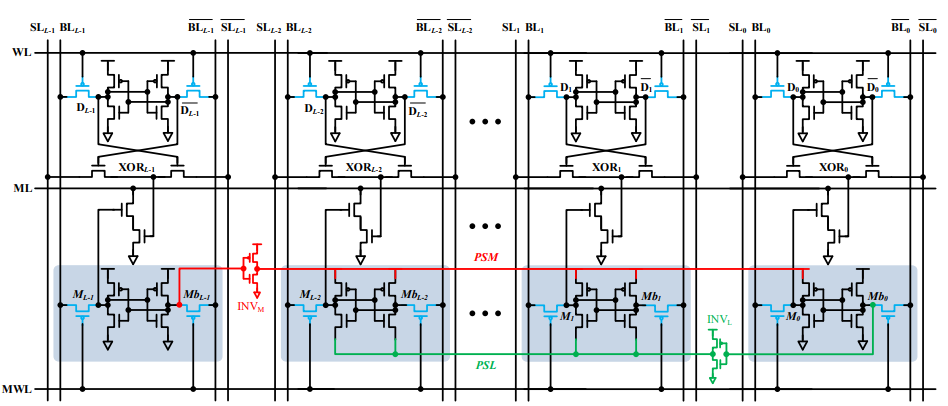Data Retention based Low Leakage Power TCAM for Network Packet Routing
Also Available Domains Cadence EDA|Core Memories|Cadence EDA
Objective
The main objective of this paper is to reduce the leakage power for data retention based ternary content addressable memory and it can be reduced by using the continuous feature of mask data.
Abstract
In this project, a new state preserved technique, named Data Retention based TCAM (DR-TCAM), is proposed to reduce the leakage power dissipated in the TCAM memory. The Ternary Content Addressable Memory (TCAM) is widely used in the routing table due to its high lookup performance. However, a large number of transistors would cause the power consumption of TCAM to be considerable. According to the continuous feature of mask data, the DR-TCAM can dynamically adapt the power source of mask cells so as to reduce the TCAM leakage power. Particularly, the mask data wouldn’t be destroyed in the DR-TCAM. The simulation results show that the DR-TCAM performs better than the state of the art works. When compared to the traditional TCAM design, the DR-TCAM dissipates less power. The proposed design implemented using 180nm technology in Tanner EDA tool.
Keywords: Ternary Content Addressable Memory (TCAM), low leakage power, mask data.
NOTE: Without the concern of our team, please don't submit to the college. This Abstract varies based on student requirements.
Block Diagram

Specifications
Software Requirements:
- Tanner EDA
- Technology files:180nm
Hardware Requirements:
- Microsoft® Windows XP
- Intel® Pentium® 4 processor or Pentium 4 equivalent with SSE support
- 512 MB RAM
- 100 MB of available disk space
Learning Outcomes
- Introduction to Content addressable Memories
- Transistors & its applications
- Types of Transistors
- Logic Gates using Transistors
- Pull Up and Pull Down networks
- Importance of Transistors
- MOS Fundamentals
- NMOS/PMOS/CMOS Technologies
- How to design circuits using Transistor logic?
- Importance of static power consumption in lower technology nodes
- Static power reduction techniques
- Transistor level design for TCAMS
- How to design low power, high speed area efficient transistor level circuits?
- Scope of TCAM in today’s world
- Applications in real time
- Tanner EDA tool for design and simulation
- Solution providing for real time problems
- Project Development Skills:
- Problem Analysis Skills
- Problem Solving Skills
- Logical Skills
- Designing Skills
- Testing Skills
- Debugging Skills
- Presentation Skills
- Thesis Writing Skills


 Paper Publishing
Paper Publishing
